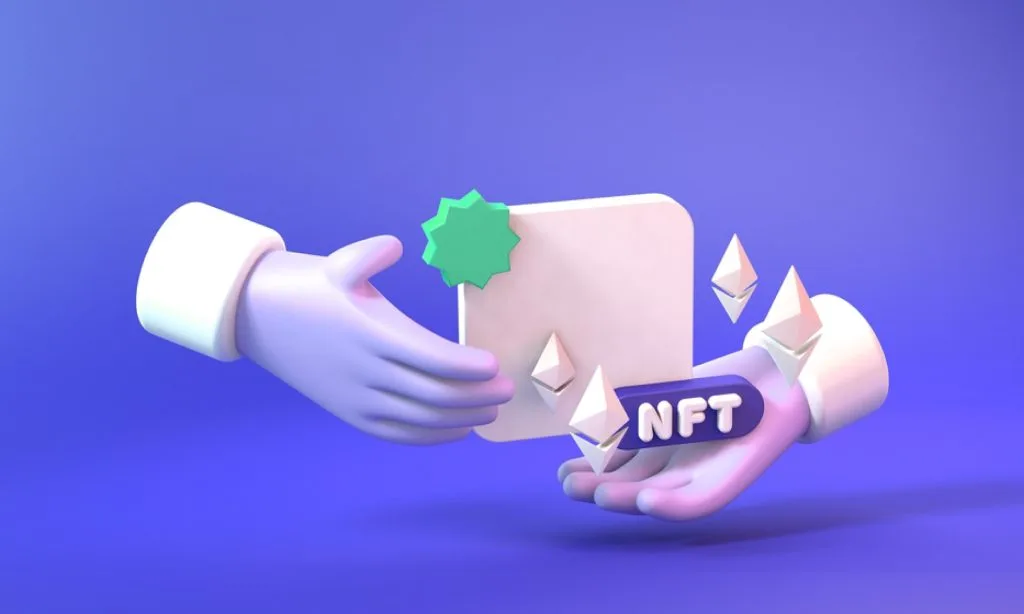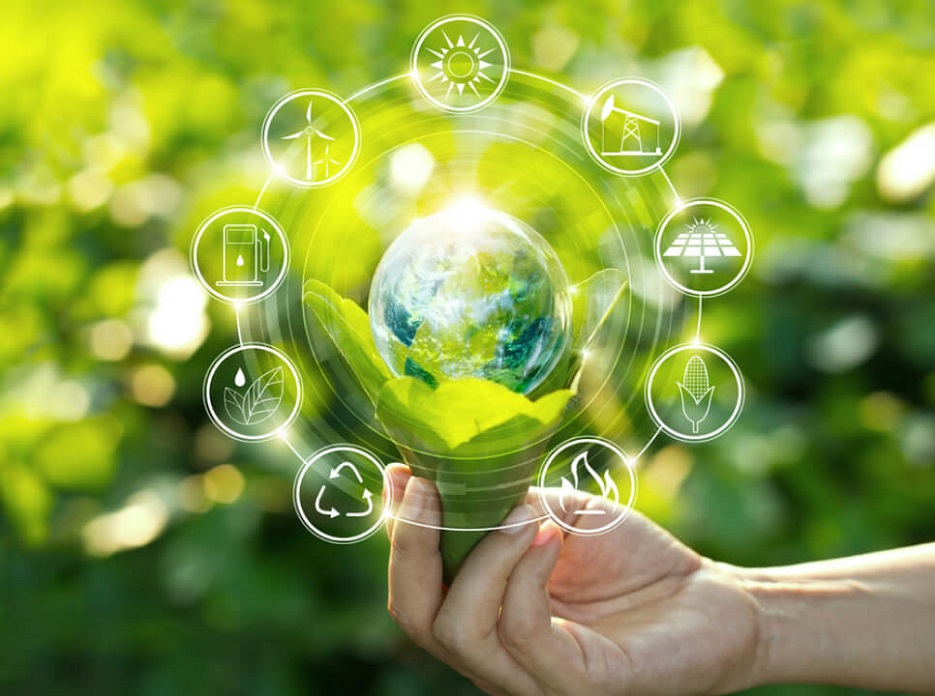
Changing how artists, producers, and investors interact with digital assets, non-fungible tokens have swept the digital landscape. Although NFTs are novel, their usually energy-intensive blockchain networks result in a notable environmental cost. Fortunately, sustainable NFT solutions—which seek to lower NFT carbon footprint and provide more environmentally friendly NFTS—are increasingly popular.
We will discuss in this blog how you may start using sustainable NFT platforms, embrace greener blockchain technology, and create environmentally friendly NFTs.
The Environmental Issues with NFTs
Understanding why NFTs have acquired a negative image in terms of sustainability would help one better appreciate the remedies. Blockchains like as Ethereum, which now use a Proof of Work mechanism to validate transactions, most NFTs are made, acquired, and traded on. PoW calls for enormous computing capability, and that energy use leaves a significant carbon impact.
Energy Consumption
- Blockchains that employ PoW, like Bitcoin and Ethereum (in its older iterations), require a large amount of power to validate transactions and issue new tokens.
Carbon Emissions
- Much of this energy comes from non-renewable sources like coal and natural gas, adding to CO2 emissions and climate change.
Scalability
-
As NFT’s popularity rises, so does the environmental effect, which raises major issues about the long-term viability of the place.
-
But don’t worry—if you’re enthused about NFTs but concerned about their environmental effect, sustainable solutions are already in place, and more are growing. Let’s investigate how you can get started in an eco-friendly area of the NFT universe.
Start with Choosing Energy-Efficient Blockchains

One of the easiest ways to guarantee your NFTs are more sustainable is by adopting blockchain platforms that employ energy-efficient consensus algorithms. The most eco-friendly alternative right now is Proof of Stake, a mechanism that requires substantially less energy than PoW.
Here are a few blockchain systems that focus on sustainability:
Ethereum 2.0
- Ethereum has moved from Proof of Work to Proof of Stake with Ethereum 2.0. This improvement has considerably lowered the energy usage of the network. If you’re already active in Ethereum-based NFTs, make sure you’re working with Ethereum 2.0 to minimize your environmental effect.
Tezos
- Tezos is a low-energy blockchain that relies on a Proof of Stake mechanism, making it one of the most environmentally friendly NFTs. Some major NFT marketplaces, including Hic et Nunc, operate on Tezos, providing artists and buyers a greener option to Ethereum-based platforms.
Flow
- Flow is another energy-efficient blockchain created primarily for the construction of NFTs and decentralized apps. It employs a more efficient consensus mechanism, making it a top choice for sustainable NFT solutions. Flow is the framework powering NBA Top Shot, one of the most successful NFT initiatives to date.
Solana
- Solana is noted for its scalability and energy efficiency. It combines a mix of Proof of Stake and Proof of History, a revolutionary consensus process that substantially minimizes the computing work necessary to validate transactions. NFT projects on Solana are expanding, making it a formidable rival for sustainability-conscious producers and collectors.
Use Eco-Friendly NFT Marketplaces
Once you’ve picked an energy-efficient blockchain, the next step is to discover a sustainable NFT marketplace that corresponds with your green aims. Many new marketplaces are focused on eco-conscious activities, ensuring that NFTs are developed, marketed, and exchanged with minimum environmental effect.
Here are a few significant eco-friendly NFT marketplaces:
Kalamint
- Built on the Tezos blockchain, Kalamint is one of the foremost sustainable NFT markets. It provides makers and collectors a venue to sell digital art without worrying about the excessive energy usage of standard NFT platforms. The reduced carbon footprint of Tezos makes Kalamint a perfect alternative for eco-conscious NFT users.
Rarible
- Rarible, one of the largest NFT markets, has integrated Ethereum 2.0’s Proof of Stake technology. If you desire to stay on the Ethereum network while guaranteeing that your NFT transactions are more energy-efficient, Rarible is a viable solution.
Objkt (Tezos)
- Objkt is another marketplace on the Tezos blockchain, created exclusively for digital art and collectibles. It is a popular site for eco-conscious artists who wish to mint and sell NFTs without contributing to environmental damage.
Aerial
- Aerial is an NFT marketplace that not only promotes sustainable NFTs but also allows users to measure and offset their carbon impact. It gives precise data on the environmental effect of your transactions and helps you take steps to offset your carbon emissions.
Offset Your Carbon Footprint
- Even with energy-efficient blockchains and eco-friendly markets, there’s still a minor environmental effect while producing and selling NFTs. To go the additional mile in your sustainability efforts, you may offset your carbon footprint by investing in environmental programs that negate your emissions.
Read Also: Non Fungible Token (NFT): Definition and Operation
How to Offset Your NFTs’ Carbon Footprint

Carbon Offsetting Platforms: Platforms like Aerial and Nori allow you to measure your NFT carbon footprint and invest in initiatives that collect carbon or reduce emissions elsewhere. These might involve forestry efforts, renewable energy projects, or other carbon capture technology.
Direct Contributions
- Some NFT platforms offer direct solutions to offset your carbon emissions at the moment of transaction. When you purchase or sell an NFT, you may elect to pay a little more to mitigate the energy wasted in minting and trading.
Personal Initiatives
- You may also privately give to environmental charities or programs that concentrate on lowering carbon emissions or supporting renewable energy alternatives.
Create Sustainable NFT Art or Projects
- If you’re an NFT maker, there are actions you can do to make your own projects more eco-friendly. Here are some ideas:
Choose Sustainable Tools
- When developing and minting your NFTs, go for platforms and solutions that minimize environmental effect. As indicated previously, employ blockchains and markets like Tezos, Flow, or Ethereum 2.0, which have reduced energy use.
Promote Green Awareness
- Use your NFT projects as a tool to raise awareness about environmental concerns. You may make art that promotes climate change, sustainability, or renewable energy, and contribute a percentage of your revenues to environmental groups. This not only benefits the world but also connects with the rising number of customers who favor eco-conscious enterprises.
Engage in Sustainable Practices
- As part of your dedication to sustainability, include greener methods into your whole creative process. This may involve employing renewable energy for your digital tools, offsetting your emissions from generating and selling NFTs, or cooperating with other environmentally conscientious artists and developers.
Spread the Word: Advocate for Sustainable NFTs
One of the most successful methods to influence change in the NFT field is by promoting knowledge about sustainable NFT solutions. Whether you’re a maker, collector, or casual fan, pushing for greener methods may help drive the entire NFT ecosystem toward more eco-friendly choices.
Here are several ways to advocate:
Social Media
- Share your expertise on sustainable NFT solutions on social media sites. Highlight eco-friendly blockchains and marketplaces, and urge your followers to select for greener solutions.
Community Involvement:
- Join NFT communities that concentrate on sustainability. These can be forums, Discord groups, or even local artist networks that debate strategies to decrease the environmental effect of NFTs.
Education
- Host workshops, make blog entries, or start a YouTube channel to teach people about sustainable NFTs. The more people know about the environmental impact of NFTs and how to lessen it, the more likely we are to see a change toward eco-friendly behaviors.
Conclusion
NFTs have transformed the way we produce, trade, and gather digital assets, but the environmental issues they bring can’t be overlooked. By implementing sustainable NFT solutions, you can actively minimize your carbon impact while still engaging in this exciting new arena.
Whether you’re adopting energy-efficient blockchains, employing eco-friendly NFT markets, offsetting your emissions, or launching sustainability-focused enterprises, there are numerous ways to get started on the green path. By taking these measures, you’re not only conserving the earth but also contributing to the development of a more sustainable and responsible blockchain environment.
